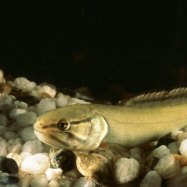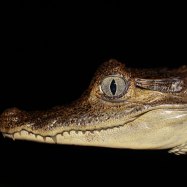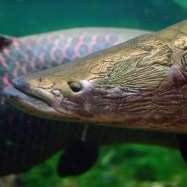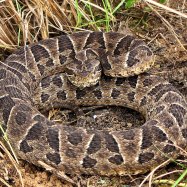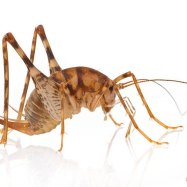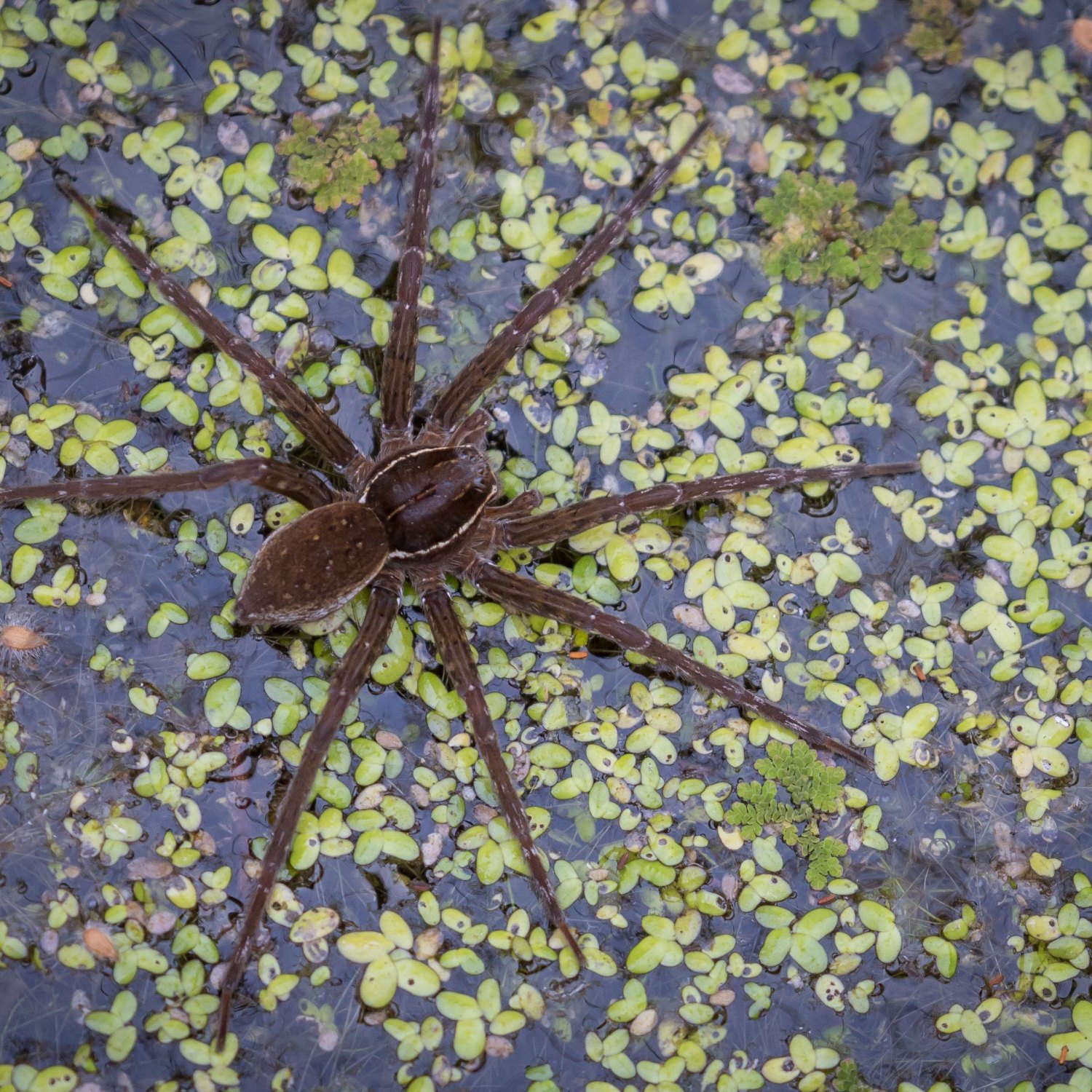
Fishing Spiders
Varies depending on species
Fishing spiders, part of the family Pisauridae, are found near bodies of water. With a medium size and long legs, their length varies depending on the species. These spiders are skilled hunters and can even walk on water, making them fascinating creatures to observe in their natural habitat. #animals #wildlife #NatureLovers
Animal Details Summary:
Common Name: Fishing Spiders
Kingdom: Animalia
Habitat: Freshwater habitats
The Astonishing Fishing Spiders: Masters of the Freshwater Habitat
Nature is full of surprises, and the countless species of animals that inhabit our planet continue to amaze us with their unique traits and behaviors. One such creature is the fishing spider, a fascinating arachnid that has mastered the art of fishing and has adapted remarkably well to the freshwater habitats around the world. With their distinctive appearance and remarkable skills, fishing spiders are a fascinating subject for nature enthusiasts and scientists alike.Meet the Fishing Spiders
Scientifically known as Dolomedes spp Fishing Spiders., fishing spiders are often referred to as the "arachnids of the water" due to their ability to thrive in and around freshwater habitats. These medium-sized spiders belong to the kingdom Animalia and the class Arachnida, along with their cousins, the spiders. They are part of the order Araneae and the family Pisauridae, with various species found across the globe.A Worldwide Distribution
The fishing spiders' geographical distribution is widespread, with species found in various parts of the world. They are present in North and South America, Europe, Asia, Africa, and Australia. Each species is uniquely adapted to its specific habitat, making them successful in colonizing different regions of the planet.The Striking Appearance of Fishing Spiders
Fishing spiders vary in coloration, with different species exhibiting different shades and patterns. They can be brown, black, or gray, with some displaying stripes or spots on their body. Their body shape is also distinctive, with long legs that can span up to 4 inches Frogfish. These physical features make them surprisingly similar to common spiders, but as we delve deeper into their characteristics, the differences become more apparent.Masters of the Water: Fishing Techniques
Fishing spiders have earned their name from their remarkable ability to hunt and feed on aquatic insects and small fish. Unlike other spiders, they do not build webs to catch prey. Instead, fishing spiders use their speed, agility, and natural camouflage to blend in with their surroundings and ambush their unsuspecting prey.One of their most interesting hunting techniques is the "luring" method, where they use specific vibrations to attract curious insects and small fish towards them. This behavior also helps them locate their prey, as their excellent vision and sensory abilities allow them to detect even the slightest movements above and below the water's surface.
The Perfect Habitat for Fishing Spiders
Fishing spiders thrive in freshwater habitats, including streams, rivers, lakes, and ponds. They prefer still and shallow waters, where they can quickly move on the surface while hunting. These arachnids are also known to venture onto land, making their homes near the water's edge or even inside the water itself.Their unique adaptation to water also allows them to float on the surface, supported by the tiny hairs on their legs that trap air bubbles. This ability helps them navigate and escape predators, as well as transport their prey back to their lairs.
A Lethal Predator
Fishing spiders are carnivorous creatures and are very skilled at hunting their prey. They primarily feed on insects, such as dragonflies, mayflies, and water striders, but larger species have also been known to catch and consume small fish and tadpoles.Once they have secured their prey, they inject their venom, which paralyzes their victim and aids in digestion. This venom is not harmful to humans and is only potent enough to subdue their prey.
Aquatic Lifesavers
Aside from being efficient hunters and predators, fishing spiders play a crucial role in maintaining the ecological balance of freshwater ecosystems. They control insect populations, which helps prevent diseases and disruption of the food chain. Without their presence, some species of aquatic insects could reproduce uncontrollably and cause imbalances that could be detrimental to the ecosystem.Varied Species and Their Unique Traits
Fishing spiders belong to the genus Dolomedes, which comprises more than 170 species. Each species is wonderfully adapted to its specific habitat, giving them unique traits and characteristics. Some notable species are described below.- Dolomedes Tenebrosus: These spiders are found throughout the United States and Canada and are known for their large size and dark coloration. They can grow up to 2 inches long and are skilled hunters, often catching and consuming fish larger than themselves.
- Dolomedes Fimbriatus: This species is widespread in Europe and Asia and is recognizable by the three distinct white lines on its abdomen. They are excellent climbers and can even walk on the water's surface due to their light-weight bodies.
- Dolomedes Schizocosa: These spiders are found in North and South America and are known for their hunting technique called "sneaking." They cautiously approach their prey underwater and then quickly dash to catch them, all while making as little disturbance in the water as possible.
The Ever-Adaptive Fishing Spiders
One of the most remarkable characteristics of fishing spiders is their ability to adapt to their surroundings. They are a prime example of nature's adaptability, as they can live in various habitats and adjust their behavior accordingly. For example, some species living in colder regions have evolved to become semi-aquatic, while species in arid regions have developed the ability to survive in drought conditions.A Bright Future Ahead
Fishing spiders may seem like a small part of the natural world, but they play a significant role in maintaining ecological balance and diversity. However, like many other creatures, their habitats are under threat due to pollution, habitat destruction, and global climate change. As responsible citizens of this planet, it is our duty to protect and preserve their habitats and ensure that these fascinating arachnids continue to thrive in their underwater world.The Fascinating World of Fishing Spiders
The fishing spiders' world is a fascinating one, full of surprises and unique characteristics that make them stand out from their spider relatives. From their striking appearance and remarkable hunting skills to their crucial role in freshwater ecosystems, these arachnids are worthy of our attention and admiration. As they continue to thrive and adapt to their surroundings, we can only imagine what other secrets and marvels these creatures hold.

Fishing Spiders
Animal Details Fishing Spiders - Scientific Name: Dolomedes spp.
- Category: Animals F
- Scientific Name: Dolomedes spp.
- Common Name: Fishing Spiders
- Kingdom: Animalia
- Phylum: Arthropoda
- Class: Arachnida
- Order: Araneae
- Family: Pisauridae
- Habitat: Freshwater habitats
- Feeding Method: Carnivorous
- Geographical Distribution: Worldwide
- Country of Origin: Varies depending on species
- Location: Near bodies of water
- Animal Coloration: Varies depending on species
- Body Shape: Medium-sized spiders with long legs
- Length: Varies depending on species
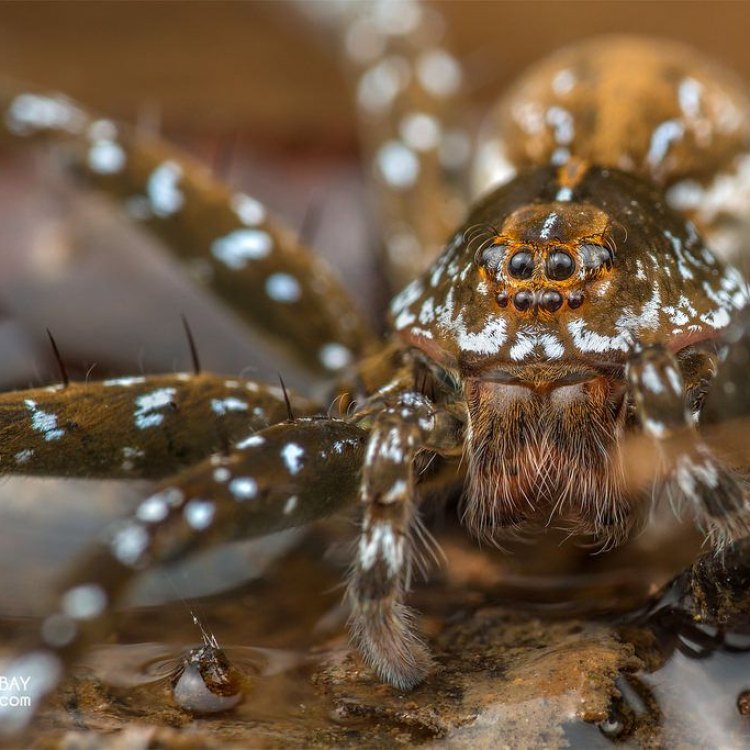
Fishing Spiders
- Adult Size: Varies depending on species
- Average Lifespan: 1-2 years
- Reproduction: Sexual
- Reproductive Behavior: Males engage in courtship rituals
- Sound or Call: Do not produce sounds
- Migration Pattern: Non-migratory
- Social Groups: Solitary
- Behavior: Excellent swimmers and hunters
- Threats: Habitat loss, pollution, and climate change
- Conservation Status: Varies depending on species
- Impact on Ecosystem: Help control insect population
- Human Use: None
- Distinctive Features: Large size and ability to walk on water
- Interesting Facts: Can catch fish and other aquatic insects
- Predator: Birds, reptiles, and other spiders
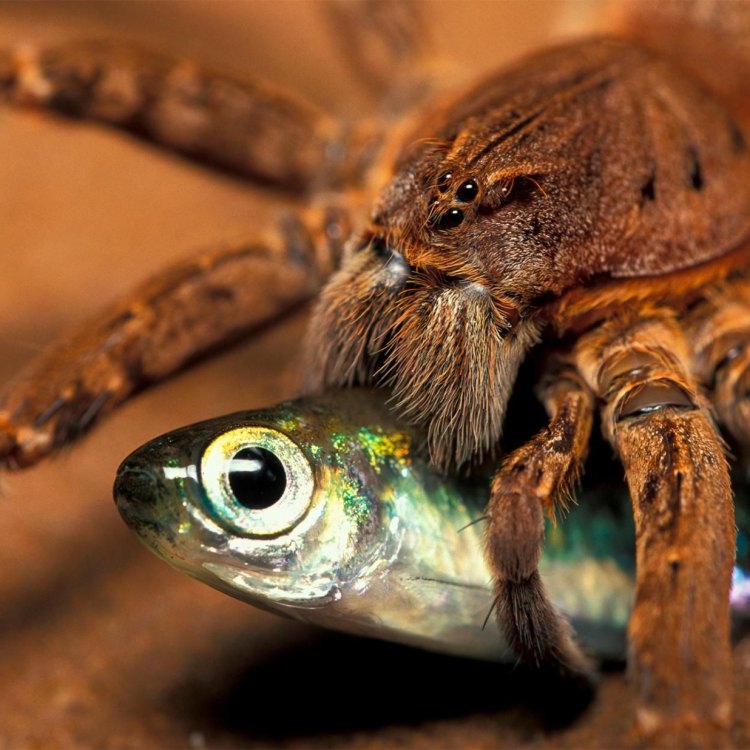
Dolomedes spp.
The Incredible Fishing Spiders: Masters of the Water
In the world of spiders, the term 'fishing' may seem out of place. Spiders are often associated with weaving intricate webs to catch their prey. However, there is a family of spiders that has earned the title of being skilled fishermen – the Fishing Spiders. These eight-legged creatures are not only fascinating for their unique hunting techniques but also for their distinct characteristics and behaviors PeaceOfAnimals.Com.Fishing spiders, also known as Pirata or Dolomedes, are a group of around 150 species that belong to the family Pisauridae. They can be found in various parts of the world, including North and South America, Europe, and Asia. These spiders typically live near water bodies such as streams, ponds, and marshes, earning them the name 'fishing spiders.'
One of the most striking features of fishing spiders is their large size. Being true spiders, they have eight legs, two body segments, and fangs used for injecting venom into their prey. The size of these spiders varies depending on the species, but they can range from half an inch to over 2 inches in length. This makes them one of the largest spider species in the world, and their size is crucial to their hunting success.
Fishing spiders have a relatively long lifespan compared to other spider species, with an average of 1-2 years. This is because they have a slower metabolism, allowing them to conserve energy and survive for longer periods Firefly Ball Python.
In terms of reproduction, fishing spiders engage in sexual reproduction, with males performing elaborate courtship rituals to attract females. These rituals can involve drumming their front legs against the ground, vibrating their webs, and presenting prey as gifts to the females. If the female is impressed, she will allow the male to approach her and mate.
Unlike some spider species that produce silk to create webs or cocoons, fishing spiders do not produce any sounds. Instead, they use their keen vision and vibration sensing hairs on their legs to detect prey and potential predators.
Fishing spiders are solitary creatures, preferring to lead a solitary lifestyle away from other spiders. However, females may be seen together with their offspring for a short period of time before they venture off on their own.
Despite being solitary, these spiders are excellent swimmers and hunters. They can use their legs to create vibrations on the surface of the water, mimicking the movement of an insect and attracting prey. They also have the unique ability to walk on water, thanks to the small hairs on their feet that trap air bubbles, allowing them to float.
Their hunting technique is precisely where they get their name from – fishing spiders. These spiders are known to prey on insects, small fish, tadpoles, and other aquatic creatures. They use their front legs to grab their prey and inject them with venom, paralyzing them. They then drag their prey out of the water and consume it.
While they are skilled hunters, fishing spiders also face several threats in their natural habitat. Habitat loss due to human development, pollution, and climate change are putting these spiders at risk. Additionally, they may also fall prey to birds, reptiles, and other spiders.
The conservation status of fishing spiders varies depending on the species and their geographic location. Some species are considered stable, while others are facing a decline in their population due to habitat destruction and pollution. It is essential to protect their natural habitats to ensure the survival of these remarkable creatures.
Apart from their hunting abilities and unique characteristics, fishing spiders also play a vital role in the ecosystem. They help control the population of insects, including mosquitoes, which can be considered a nuisance by humans. By keeping these insect populations in check, fishing spiders contribute to maintaining the balance in the ecosystem.
Despite their impressive abilities and importance in the ecosystem, fishing spiders have no significant human use. They are not kept as pets or used for venom extraction. However, they can be admired and studied from a safe distance.
Intrigued by fishing spiders, scientists have undertaken numerous studies to learn more about these creatures. One study from the University of Cincinnati found that fishing spiders can catch fish and other aquatic insects by using two methods – surface orientation and motion detection. Another study from Eastern Illinois University discovered that fishing spiders can also use vision to navigate their way back to their nests after hunting.
Whether these spiders act as fishermen or hunt in the water, they are truly a marvel of nature. Their large size, amazing hunting techniques, and unique abilities make them a fascinating subject of study. Moreover, they serve as a reminder of the diverse and incredible creatures that inhabit our planet.
In conclusion, fishing spiders may not be a familiar sight for many, but they are undoubtedly a species worth learning about. With their large size, excellent hunting abilities, and important role in the ecosystem, these creatures are a testament to the wonders of the natural world. As humans, it is our responsibility to protect their habitats and ensure their survival for generations to come. So, the next time you come across a fishing spider near a water body, take a moment to appreciate these extraordinary creatures.
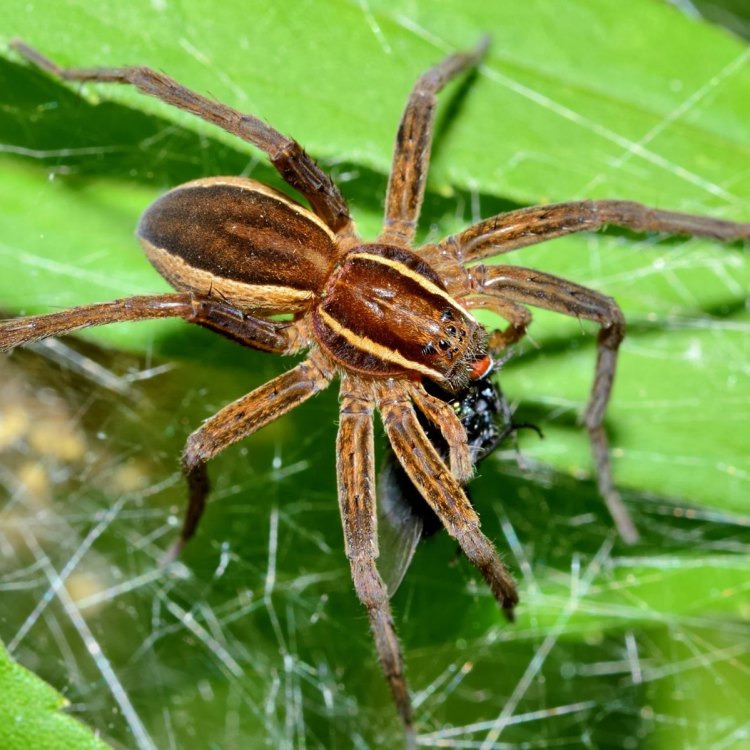
The Astonishing Fishing Spiders: Masters of the Freshwater Habitat
Disclaimer: The content provided is for informational purposes only. We cannot guarantee the accuracy of the information on this page 100%. All information provided here may change without prior notice.


